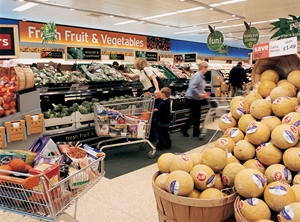How To Cook Without Contaminants
 Whether you are an experienced chef or just starting to learn how to cook, everyone can agree that the last ingredients they want in their food are harmful contaminants that could lead to food-borne illnesses. Food can become contaminated at any point – either before it even enters your home or at some point during the storage, preparation and serving of it. A case of food poisoning can be the fastest way to discourage your newfound interest in cooking lessons. Fortunately, though, preventative measures are actually very easy to put into place. Here are some tips to follow along every step of the way to ensure that you and your family are eating well and without the fear of impending sickness.
Whether you are an experienced chef or just starting to learn how to cook, everyone can agree that the last ingredients they want in their food are harmful contaminants that could lead to food-borne illnesses. Food can become contaminated at any point – either before it even enters your home or at some point during the storage, preparation and serving of it. A case of food poisoning can be the fastest way to discourage your newfound interest in cooking lessons. Fortunately, though, preventative measures are actually very easy to put into place. Here are some tips to follow along every step of the way to ensure that you and your family are eating well and without the fear of impending sickness.
Shopping for ingredients
Although they say to never judge a book by its cover, the same doesn’t always hold true for grocery stores. Would you feel comfortable eating in a dingy kitchen that just felt dirty? No? Then why would you want to buy your produce from a store that has has the same feeling? Dirty, disorganized stores are not ideal places to shop because they often aren’t as good about removing expired food items from their shelves as a chain store will be. We’re not saying to avoid all local mom-and-pop grocery stores, though. Just the ones that may be putting your health at risk.
Once you’ve found a market that you feel comfortable with, shop strategically – especially on hot days. Start out by collecting all your non-perishables and dry goods before heading to the refrigerator and freezer aisles. Bag all your cold items together to keep them from warming up too much before you get home.
Storing food at home
You’ve probably noticed by now that your refrigerator has different compartments and drawers in addition to the shelving. It may seem like a no brainer, but they are there so that you can safely separate food products to prevent cross-contamination or spoiling.
Be sure that your raw meats are separated from other foods and placed somewhere that they can’t drip any juices onto them. If you don’t have room for the meat on a bottom shelf or compartment, be sure to place it on a tray or plate to prevent this from happening. Any meat that isn’t being cooked within a few days should be stored in the freezer.
Preparing meals
When preparing food for yourself or others, it’s extremely important to wash your hands and any surfaces that you will be working on. Before eating or using any produce, you’ll need to thoroughly wash it in order to remove any harmful bacteria that may be living on it.
Cooking meat can be tricky. On the one hand, you don’t want the food to turn out tough and dry, but on the other hand, you don’t want to serve it raw. This is why a meat thermometer will become your best friend as you start cooking simple recipes. As a general rule of thumb, the following meats should be cooked to their corresponding temperatures in order to prevent illness:
- Beef, veal and lamb: 145 degrees Fahrenheit
- Ground beef, pork, and lamb: 160 degrees Fahrenheit
- Ground turkey and chicken: 165 degrees Fahrenheit
- Whole chicken and turkey: 165 degrees Fahrenheit
- Pork and ham: 145 degrees Fahrenheit
- Fish: 145 degrees Fahrenheit
- Leftovers: 165 degrees Fahrenheit
Keeping leftovers
If you cooked enough food to have leftovers, you’ll definitely want to store them for a tasty lunch or easy dinner later in the week. Typically, leftovers can be safely stored for three to four days in the refrigerator, so you’ll want to eat them within this time frame. If you don’t think you’ll be able to, immediately put the leftovers in the freezer for safekeeping. Foods that sat at room temperature for more than two hours – or more than one hour above 90 degrees – should be thrown out.
If you like this post, please be sure to check out the following!
Keeping Your Fruits And Veggies Clean
3 Tips For Keeping Your Kitchen Clean





Recent Comments